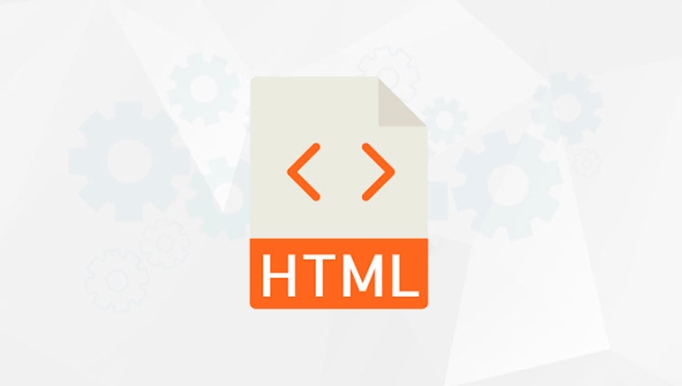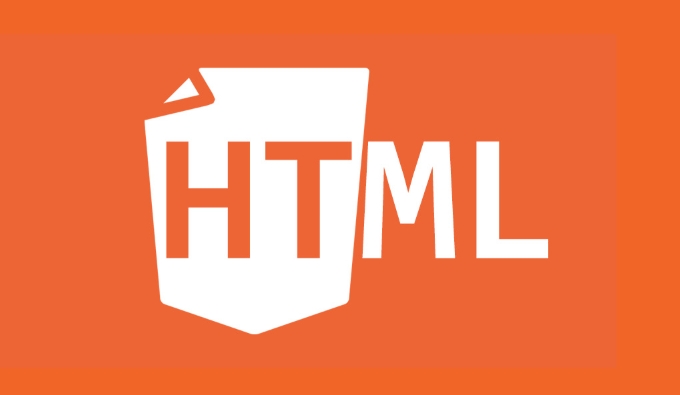 Web Front-end
Web Front-end
 HTML Tutorial
HTML Tutorial
 How do the action and method attributes of the html form element work?
How do the action and method attributes of the html form element work?
How do the action and method attributes of the html form element work?
Jul 04, 2025 am 12:54 AMThe action and method attributes in HTML forms specify where and how form data is sent upon submission. 1. The action attribute defines the URL where the form data is sent, which can be a relative or absolute path; if omitted, the form submits to the current page. 2. The method attribute determines the HTTP method used—GET appends data to the URL, suitable for non-sensitive, retrievable data, while POST sends data in the request body, preferred for sensitive or modifying operations. 3. Common mistakes include incorrect action paths, misusing GET for sensitive data, and missing encoding settings like enctype for file uploads. Understanding these attributes ensures effective and secure form handling.

When you're working with HTML forms, two of the most important attributes are action and method. These tell the browser where to send the form data and how to send it. Let’s break them down in a straightforward way.

What does the action attribute do?
The action attribute specifies where the form data should be sent when the user submits the form. This is usually a URL pointing to a server-side script (like PHP, Python, Node.js, etc.) that processes the data.

For example:
<form action="/submit-form">
This means when someone clicks "Submit", their browser will send the form data to /submit-form on your website.

If you leave out the action attribute, the form will submit to the current page by default — which can be useful if you're handling the form submission with JavaScript or if the same page handles the processing.
A few things to note:
- The path can be relative (
/submit-form) or absolute (https://example.com/submit) - It's common to use backend endpoints like
/process.phpor/api/submit - If you're using JavaScript to handle submissions, you might not need this
How does the method attribute work?
The method attribute determines how the form data gets sent to the server. There are two main values: GET and POST.
GET method
When you use method="get", the form data is appended to the URL as a query string. For example:
<form action="/search" method="get">
If the user types "apple" into an input named query, the browser goes to:
/search?query=apple
Use GET when:
- You’re retrieving data (like search results)
- You don’t mind the data being visible in the URL
- You want users to be able to bookmark or share the result
But avoid GET for:
- Sensitive data (because it shows up in the URL and browser history)
- Large amounts of data (URL length has limits)
POST method
With method="post", the data is sent in the HTTP request body, not in the URL. So it's not visible in the address bar.
<form action="/login" method="post">
Use POST when:
- You're sending sensitive information (like passwords or personal info)
- You're modifying or creating data (like submitting a comment or logging in)
- You expect the action to have side effects (like updating a database)
One thing to keep in mind: Browsers often warn users about resubmitting POST requests, which helps prevent accidental double-submissions.
Common mistakes and tips
Here are a few things people often get wrong or overlook:
-
Wrong
actionpath: Make sure the URL inactionactually exists and is correctly handled by your server. -
Confusing GET and POST: Use
GETfor fetching,POSTfor changing things. That’s the general rule of thumb. -
Missing
method: If you don’t specify a method, it defaults toGET. Not always what you want, especially for login forms or contact forms. -
Encoding issues: The form data encoding depends on another attribute called
enctype. If you're uploading files, make sure to setenctype="multipart/form-data".
And one more thing — if you're using JavaScript to handle form submissions (with fetch or XMLHttpRequest), you can still use these attributes, but you might prevent the default behavior so the browser doesn't reload the page.
So basically, action tells the browser where to go, and method tells it how to get there. They're simple, but understanding when and how to use them makes a big difference.
The above is the detailed content of How do the action and method attributes of the html form element work?. For more information, please follow other related articles on the PHP Chinese website!

Hot AI Tools

Undress AI Tool
Undress images for free

Undresser.AI Undress
AI-powered app for creating realistic nude photos

AI Clothes Remover
Online AI tool for removing clothes from photos.

Clothoff.io
AI clothes remover

Video Face Swap
Swap faces in any video effortlessly with our completely free AI face swap tool!

Hot Article

Hot Tools

Notepad++7.3.1
Easy-to-use and free code editor

SublimeText3 Chinese version
Chinese version, very easy to use

Zend Studio 13.0.1
Powerful PHP integrated development environment

Dreamweaver CS6
Visual web development tools

SublimeText3 Mac version
God-level code editing software (SublimeText3)

Hot Topics
 How to get HTML form data as text and send to html2pdf?
Sep 06, 2023 pm 12:21 PM
How to get HTML form data as text and send to html2pdf?
Sep 06, 2023 pm 12:21 PM
html2pdf is a JavaScript package that allows developers to convert html to canvas, pdf, images, and more. It takes html as parameter and adds it to pdf or desired document. Additionally, it allows users to download the document after adding html content. Here we will access the form and add it to the pdf using the html2pdfnpm package. We will see different examples to add form data to pdf. Syntax User can follow the following syntax to pass html form data as text and send it to html2pdf. varelement=document.getElementById('form');html2
 How to allow multiple file uploads in HTML form
Aug 28, 2023 pm 08:25 PM
How to allow multiple file uploads in HTML form
Aug 28, 2023 pm 08:25 PM
In this article, we will learn how to allow multiple files uploads in HTML forms. We use multiple attributes to allow multiple file uploads in HTML forms. Several properties are available for email and file input types. Ifyouwanttoallowausertouploadthefiletoyourwebsite,youneedtouseafileuploadbox,alsoknownasafile,selectbox.Thisiscreatedusingthe<in
 PHP file upload tutorial: How to upload files using HTML forms
Jun 11, 2023 am 08:10 AM
PHP file upload tutorial: How to upload files using HTML forms
Jun 11, 2023 am 08:10 AM
PHP file upload tutorial: How to use HTML forms to upload files In the process of website development, the file upload function is a very common requirement. As a popular server scripting language, PHP can implement the file upload function very well. This article will introduce in detail how to use HTML forms to complete file uploads. 1. HTML form First, we need to use an HTML form to create a file upload page. In the HTML form, the enctype attribute needs to be set to "multipart/form-
 How to process HTML forms using Java?
Aug 10, 2023 pm 02:05 PM
How to process HTML forms using Java?
Aug 10, 2023 pm 02:05 PM
How to handle HTML forms using Java? HTML form is one of the commonly used interactive elements in web pages, through which users can input and submit data. Java, as a powerful programming language, can be used to process and validate HTML form data. This article will introduce how to use Java to process HTML forms, with code examples. The basic steps for processing HTML form data in Java are as follows: monitor and receive POST requests from HTML forms; parse the parameters of the request; process data according to needs
 PHP regular expression: how to match all form tags in HTML
Jun 23, 2023 am 10:38 AM
PHP regular expression: how to match all form tags in HTML
Jun 23, 2023 am 10:38 AM
In web development, it is often necessary to use regular expressions to match strings. In HTML, the form tag is a very important tag, so if we need to get all the form tags in the page, then regular expressions become a very useful tool. This article will introduce using regular expressions in PHP to match all form tags in HTML. 1. The form tag in HTML The form tag is a very important tag in HTML. It is used to create forms. The form is used
 What is the method attribute, and how do I use it to specify the HTTP method (GET or POST) used to submit the form?
Jun 24, 2025 am 12:55 AM
What is the method attribute, and how do I use it to specify the HTTP method (GET or POST) used to submit the form?
Jun 24, 2025 am 12:55 AM
ThemethodattributeinHTMLformsdetermineshowdataissenttotheserver,usingeitherGETorPOST.GETappendsdatatotheURL,haslengthlimits,andissuitablefornon-sensitiverequestslikesearches.POSTsendsdatainthebody,offersbettersecurity,andisidealforsensitiveorlargedat
 Best practices for structuring complex HTML forms.
Jul 03, 2025 am 02:33 AM
Best practices for structuring complex HTML forms.
Jul 03, 2025 am 02:33 AM
The key to designing complex HTML forms lies in content organization rather than encoding. To improve user experience and reduce error rates, the following steps must be followed: 1. Use and divide logical blocks to enhance structural clarity, accessibility and maintenance; 2. Clear the binding relationship between controls and tags, and ensure that each input box has corresponding tags through for and id; 3. Use hidden fields and conditions to display reasonably, combine CSS/JS to control the display status and process data validity; 4. Design hierarchical error prompts to avoid relying on color only to distinguish. It is recommended to add icons, highlight borders and set summary areas.
 What are the various input types available in html forms and their uses?
Jul 04, 2025 am 03:06 AM
What are the various input types available in html forms and their uses?
Jul 04, 2025 am 03:06 AM
HTML forms support multiple input types to suit different data entry requirements. 1. Text input is used for basic data entry, such as text and password, and interaction can be enhanced through placeholder, maxlength, required and other attributes; 2. HTML5 introduces special input types such as email, number, date, tel, and url to improve data accuracy and usability; 3. Selection and operation controls include checkbox, radio, submit, and button, for multiple selection, single selection and submission operations; 4. Hidden is used to pass uneditable data, and file is used for file upload and can limit file types. When using it, you need to consider browsing





